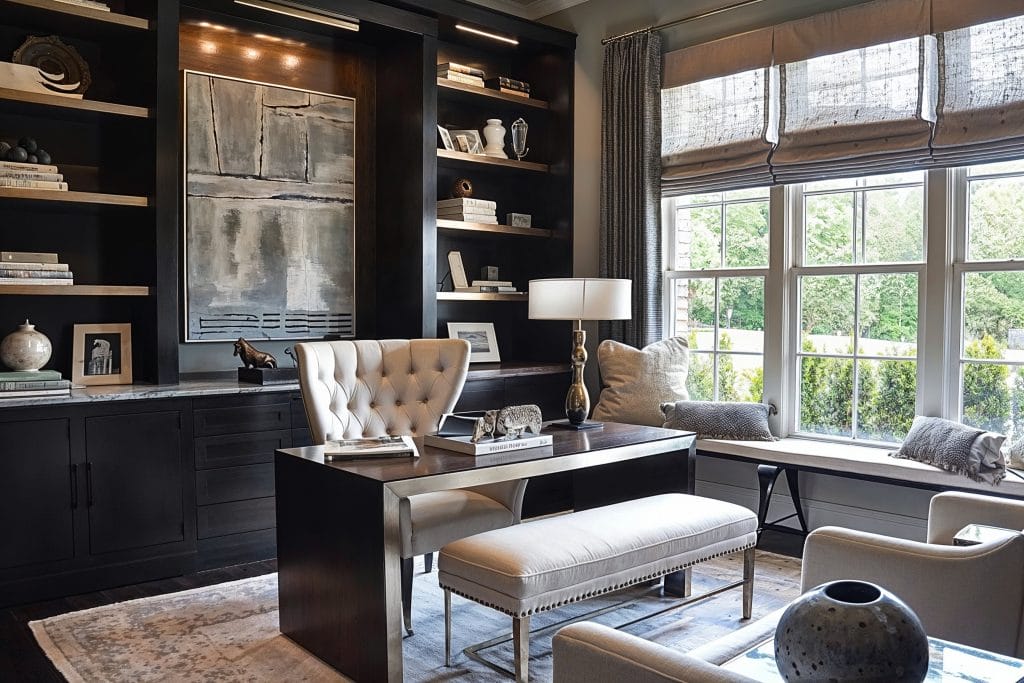Working from home has become the new normal for many professionals, freelancers, and creatives. Having a well-designed home office is not only a matter of aesthetics but also one of productivity, mental well-being, and motivation. Your workspace should be comfortable, stylish, and tailored to your needs. Whether you have a dedicated room or just a small corner, it’s entirely possible to create a home office that inspires and supports your daily work.
Choose the Right Location
The first step in creating a functional home office is selecting the right location. Ideally, you want a space with good natural light and minimal distractions. A spare bedroom is perfect for full-time remote workers who need privacy. If that’s not an option, consider using a corner of your living room or bedroom, or even converting a closet or hallway nook into a compact workspace. The goal is to find a spot that allows you to focus without constant interruptions.
Invest in a Comfortable Chair and Desk
Your chair and desk are the most important pieces of furniture in your office. An ergonomic chair with adjustable height, lumbar support, and breathable materials will help you maintain good posture and prevent fatigue. For the desk, choose one that suits your work style and space. If you have room, consider a standing desk or a model with built-in storage. Make sure the surface is large enough to accommodate your computer, notebook, and any other essentials you use daily.
Use a Calming Color Palette
Color plays a big role in how you feel while working. Soft, neutral tones like white, beige, or light gray help create a clean, calm environment. For a touch of personality, add accents in blue or green, which promote focus and tranquility. You can also incorporate small pops of vibrant color like mustard or coral to energize the space without overwhelming it. Avoid overly bright or harsh tones that can lead to eye strain or restlessness over time.
Maximize Natural Light and Add Smart Lighting
Good lighting boosts your mood and energy levels. Place your desk near a window to take advantage of natural light during the day. Use sheer curtains to filter the light and avoid glare. For artificial lighting, include a task lamp on your desk for focused work and an ambient light source, like a floor or table lamp, to brighten the entire room. If possible, install dimmers so you can adjust the lighting according to the time of day or your tasks.
Keep It Organized with Smart Storage
A cluttered space leads to a cluttered mind. Incorporate storage solutions that keep your items tidy and within reach. Floating shelves are great for books and decorative items. Filing cabinets or drawer units help manage documents and office supplies. Use baskets or boxes to organize loose cables, chargers, and other small items. Choose storage that complements your décor and keeps everything looking clean and intentional.
Add Personal Touches
Your home office should reflect who you are and what motivates you. Decorate with items that inspire you, such as framed artwork, motivational quotes, or photos of loved ones. A small corkboard or whiteboard can help you keep track of ideas and goals. Just be careful not to overdo it — too many personal items can become visual clutter. Keep the space balanced and professional, especially if you often participate in video meetings.
Incorporate Greenery
Plants bring life and freshness into any space. In a home office, they can improve air quality and help reduce stress. Easy-to-care-for plants like snake plants, pothos, or succulents are perfect for work environments. Place them on your desk, a shelf, or in a corner to instantly elevate the look and feel of the room. Even a single plant can make the space more inviting and relaxing.
Hide the Cables
Messy cords can ruin the aesthetic of your office and cause unnecessary stress. Use cable organizers, clips, or sleeves to keep cords together and out of sight. A cable box under the desk can store power strips and reduce visual clutter. Keep only the essentials plugged in, and label chargers if you have multiple devices. A clean workspace supports a clearer mind and better workflow.
Soften the Space with Textiles
To make your office feel cozier and more inviting, use textiles strategically. A rug under your desk adds warmth and helps define the workspace. Curtains or drapes can block noise and offer privacy, especially if your office is part of a shared room. You can also add a soft blanket or cushion to a reading chair or corner. These small details help create a homey environment that you enjoy spending time in.
Plan for Flexibility
Your needs may change over time, so create a home office that can evolve with you. Choose furniture and decor that are versatile and easy to move or adapt. Modular shelving, foldable desks, and lightweight storage units give you the freedom to rearrange as your workflow shifts. Neutral furniture pieces also allow you to update the look with different accessories or seasonal colors without needing a complete redesign.
Appeal to the Senses
Don’t overlook the power of scent in your home office. A pleasant aroma can lift your mood, reduce stress, and even enhance concentration. Use scented candles, essential oil diffusers, or incense sticks with calming scents like lavender, eucalyptus, or citrus. Fresh flowers or dried herbs can also add a subtle fragrance and visual beauty to your space. By appealing to all five senses, you make your office feel more complete and inviting.
Create a Home Office That Works for You
Designing a stylish and comfortable home office doesn’t require a big budget or professional interior designer. With thoughtful choices and a few key pieces, you can create a workspace that enhances your productivity and well-being. Focus on comfort, organization, light, and personal expression. When you enjoy the space you work in, you’re more likely to stay motivated, focused, and inspired every day.
